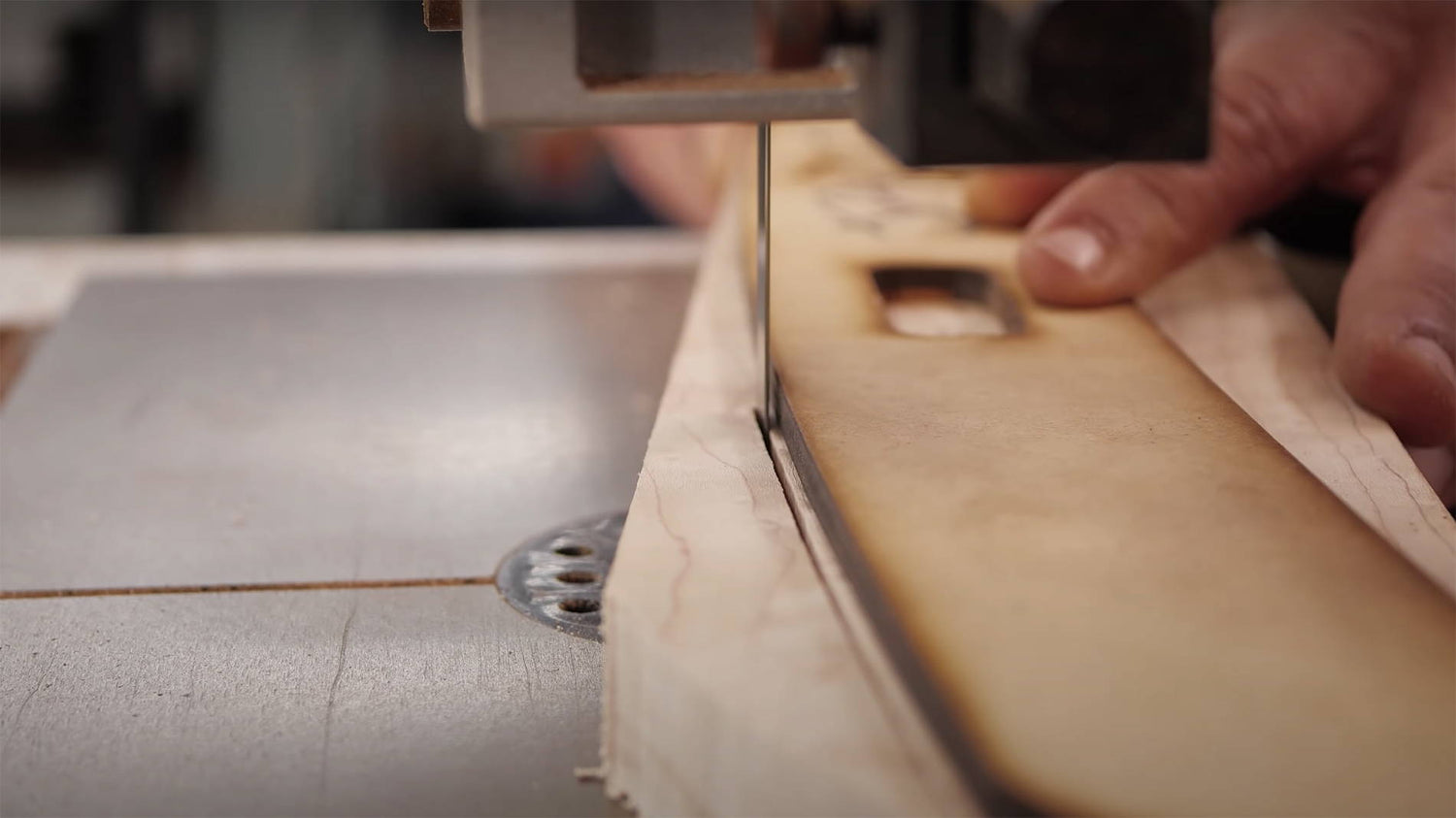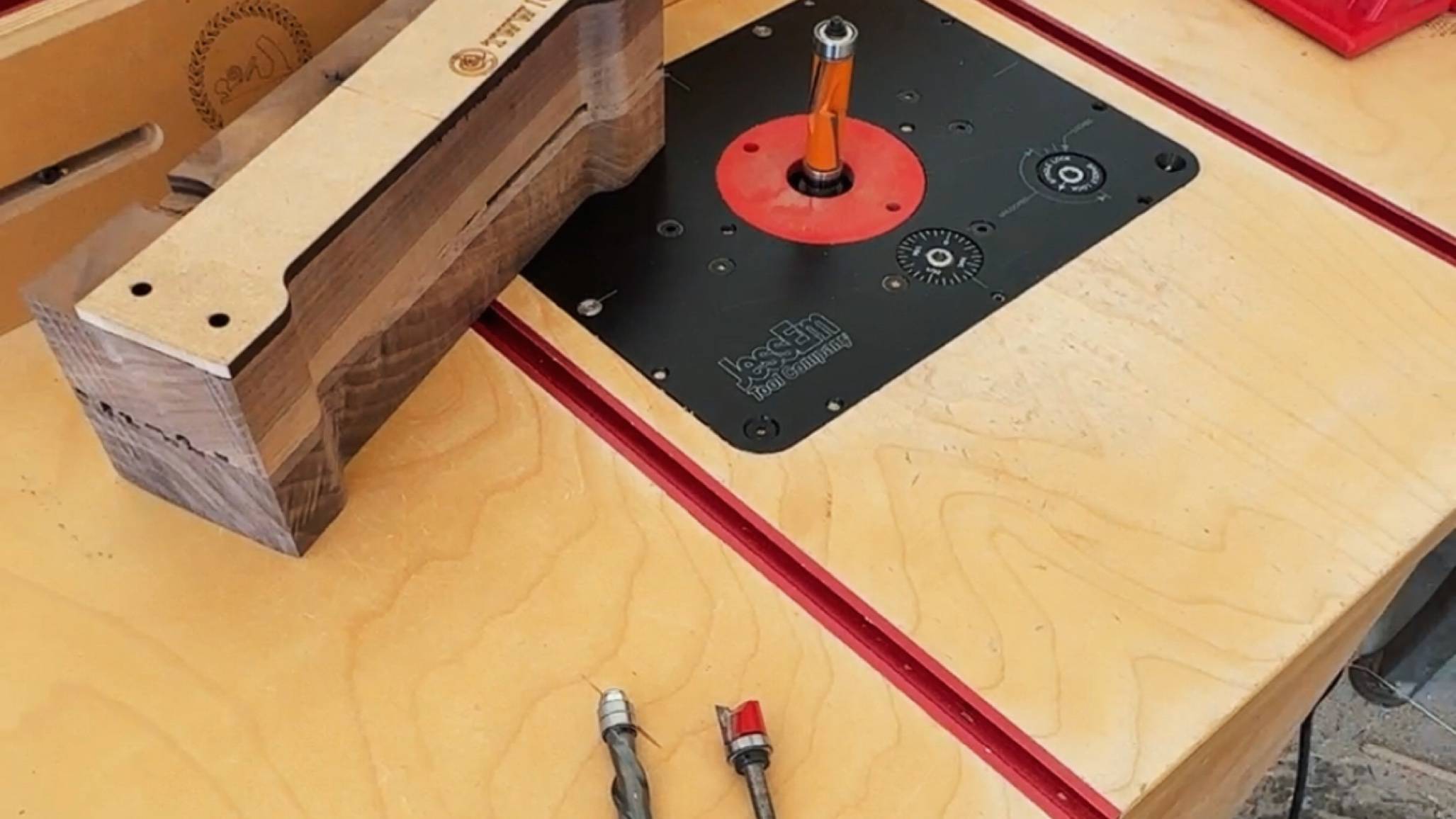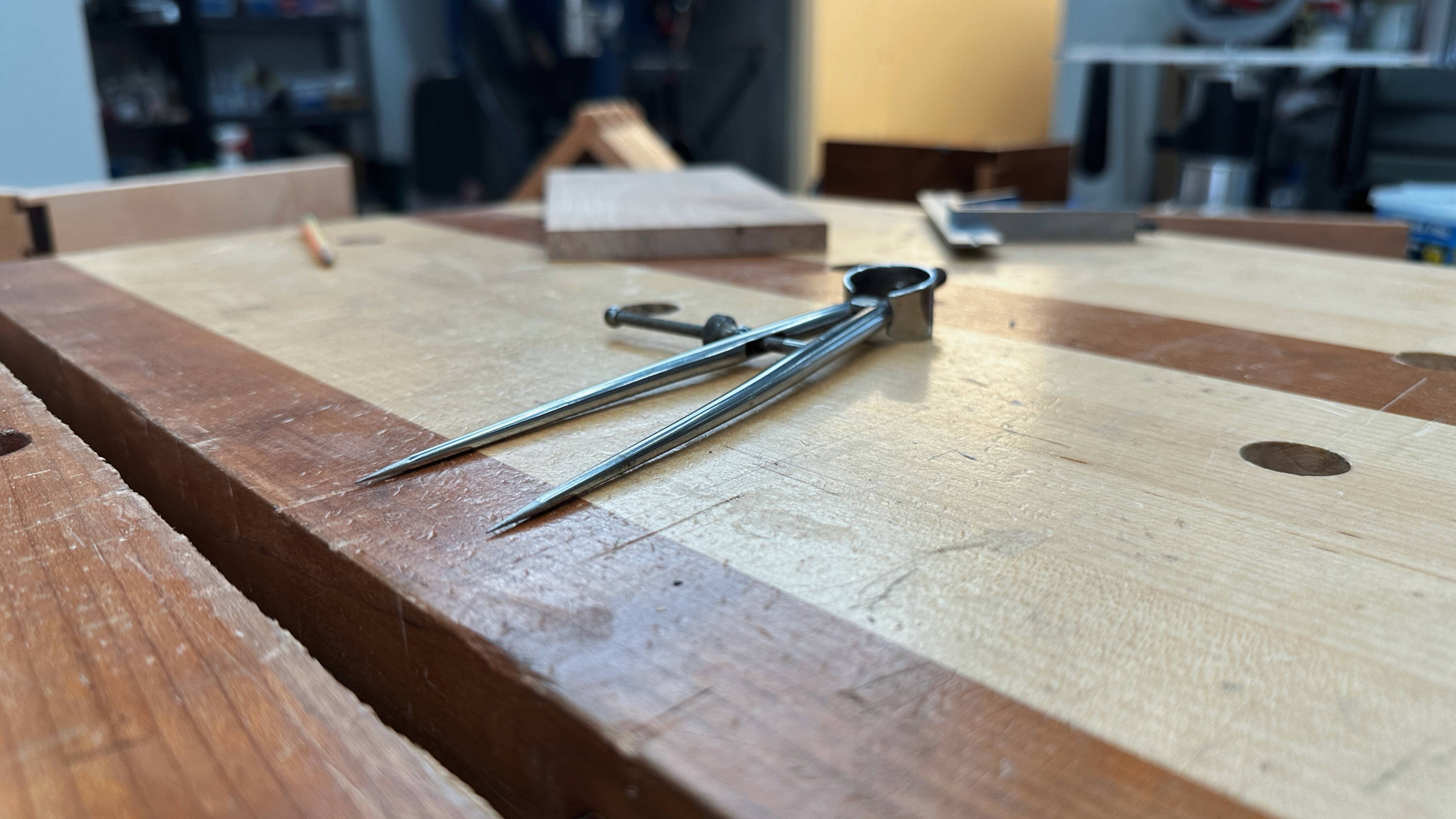To get the best results template routing, you need to cut your workpiece as close to the template as possible.
I aim to get within 1/16” of the template — which not only ensures a safer cut, but also leads to less tearout from my flush trim bit.
But it can be nerve racking to cut so close on the bandsaw alone.
The good news is, you don’t have to. Because there’s a few low-stakes ways to cut super close to your template without being a bandsaw wizard.
1. FLUSH TRIM BANDSAW JIG
This simple jig works sort of like the bearing on a flush trim router bit, except it’s on your bandsaw.
By providing a stop for the template, it helps you cut at a consistent depth all the way around your workpiece — with little risk of cutting into the template itself.
The mouth wraps around the bandsaw blade and controls cutting depth. Set it so the tip extends 1/16” past the blade, and you’ll get a consistent 1/16” proud cut all the way around your templated (here's a video of how it works).
I like to add spacers underneath to raise the top piece. This lets me cut with the template facing up so I can see what curves lay ahead.
You can build one of these jigs yourself, but we also have a CNC-cut flush trim bandsaw jig available in our store. It comes with 5 pieces to work as spacers and all the necessary hardware.
2. STATIONARY SANDER
The second way to get closer to your template works equally well with a bandsaw or jigsaw.
Start by cutting off the excess material all the way around the template. Get as close as you feel comfortable with, but don’t worry about getting 1/16” away.
After you’ve cut off the bulk of the waste, take your workpiece to a stationary belt or spindle sander.
With the template facing up, sand the workpiece on all sides until you’re within 1/16” of the template all the way around.
It’s dusty — but with a careful hand, you can get your workpiece super close to the template. From there, just take it to the router table and finish it off with a flush trim bit.
3. BLOCK PLANE OR SPOKESHAVE
Want to make as little sawdust as possible? Then you’ll love this method for cutting boards close to your template.
Rough out the shape with a bandsaw or jigsaw. The closer you get, the less work in the next step.
From there, it’s time to grab your hand tools. Specifically a block plane and spokeshave.
Lock the workpiece with the template still attached in a vise and start shaving away material. For straight edges, I like to use my block plane. It can even work for convex curves.
If you have sharp concave curves, a spokeshave is the tool for the job (maybe even a chisel if you have really tight radius curves).
With this method, you’ll need to be mindful of two things: grain direction and edge squareness.
Do your best to cut with the grain on all edges. This will involve a bit of moving around. On curved edges, the rule of thumb is usually to cut “downhill.”
And unless you're a master at holding your hand tools at exact angles, periodically check with a square to make sure you’re not undercutting the workpiece on the opposite side from the template.
Once you’re within 1/16” of the template and all sides, you’re ready for the flush trim bit.
Tempted to try template routing? Check out our blog Template Routing Basics: How to Easily Cut Repeatable Parts.
Got your own tricks for cutting close to templates? Let us know in the comments below!
Follow us on Instagram @katzmosestools, on TikTok @katzmoseswoodworking, and check out my YouTube channel for more great woodworking content...
And as always, STAY SAFE IN THE SHOP!











2 comments
Bruce
I don’t have a bandsaw so I tend to use a jigsaw when roughing out for trim routing. Rather than attempting to run the blade slightly to the waste side of my template line, I find it less stressful and catastrophe-inducing to line up one side of the opening on the foot plate ahead of the blade and use that to follow the line instead. Gives 2mm or so clearance from the template line, perfect for trimming.
I can vouch for those double bearing compression flute cutters. I have a pair including a giant 35mm diameter one, and they are brilliant. Have used them to profile 50mm thick solid oak and they went through it like butter, leaving a perfect edge with very little sanding required (to remove minor scorches caused by my sightly hesitant aka amateur technique!)
I don’t have a bandsaw so I tend to use a jigsaw when roughing out for trim routing. Rather than attempting to run the blade slightly to the waste side of my template line, I find it less stressful and catastrophe-inducing to line up one side of the opening on the foot plate ahead of the blade and use that to follow the line instead. Gives 2mm or so clearance from the template line, perfect for trimming.
I can vouch for those double bearing compression flute cutters. I have a pair including a giant 35mm diameter one, and they are brilliant. Have used them to profile 50mm thick solid oak and they went through it like butter, leaving a perfect edge with very little sanding required (to remove minor scorches caused by my sightly hesitant aka amateur technique!)
Henry Tao
Hi Jonathan, what brand of oscillating spindle sander for a semi beginner woodworking hobbyist. I am kinda in between the Ridgid, Wen, Triton. I would like to have one that has the belt and drum sanders. I don’t want to spend too much money on one since I’m still consider myself a beginner even though I’ve taken woodworking 1 & 2 classes after my retirement. Any suggestions or recommendations?
Hi Jonathan, what brand of oscillating spindle sander for a semi beginner woodworking hobbyist. I am kinda in between the Ridgid, Wen, Triton. I would like to have one that has the belt and drum sanders. I don’t want to spend too much money on one since I’m still consider myself a beginner even though I’ve taken woodworking 1 & 2 classes after my retirement. Any suggestions or recommendations?